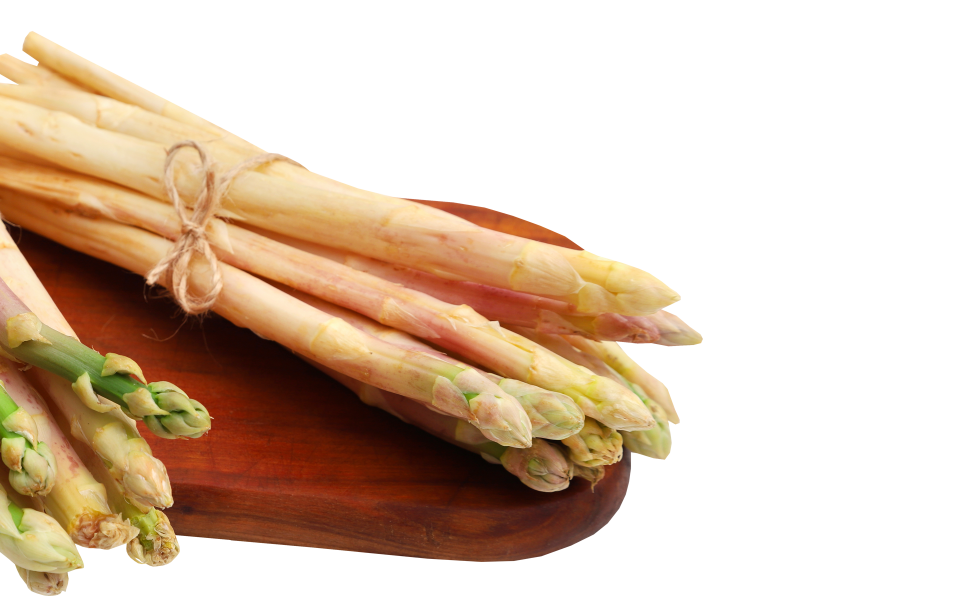The topic: Boiling, stewing, steaming, frying - when raw foods are prepared by applying heat, not only their appearance, consistency, or nutritional content changes, but also their chemical composition - and thus their flavor and taste. In a comparative study, researchers at Wageningen University in the Netherlands have investigated how asparagus changes when it is cooked. The aim of Pegiou and colleagues [1] was to investigate taste and flavor differences between raw and cooked asparagus and to identify the organic compounds responsible.
The challenge: To create a comprehensive taste and flavor profile of raw and cooked white asparagus, Pegiou and colleagues opted for a non-targeted analysis using mass spectrometry (MS) detection. To capture the entire range of relevant volatile, semi-volatile and non-volatile compounds, the researchers used both gas chromatography (GC) and liquid chromatography (LC) separation techniques. The information gained enabled them to also reach conclusions about the metabolic pathways involved in synthesizing the profiles. In addition, asparagus samples were assessed by a sensory taste panel and the GERSTEL Olfactory Detection Port (ODP) was used in parallel to the MS detector for olfactory identification of relevant secondary metabolites that contribute to the typical asparagus flavor.
The analysis: Volatile and semi-volatile compounds were determined using HS-SPME-GC-MS. Powdered asparagus samples were placed in headspace vials and sample preparation and introduction was performed automatically by the GERSTEL MultiPurpose Sampler (MPS). Thermal desorption and transfer of the analytes from the HS-SPME fiber to the separation column, was performed using the GERSTEL Cooled Injection System (CIS 4). Semi-polar, non-volatile compounds relevant to the asparagus flavor were determined using LC-MS. (For analysis details, see [1,2].)
Interim results: According to Pegiou et al., dimethyl sulfide was the strongest discriminating compound in boiled asparagus. Its olfactory impression: Cabbage-like and sulfurous. The compounds that form the characteristic raw asparagus flavor are carbonyls (C6 to C9), including hexanal, 2,3-octanedione-1-octen-3-ol and 2,4-decadienal as well as 2-butylfuran and 2-pentylfuran. The odor-active carbonyls and furans were detected in the GC/O and described with attributes such as fresh, fruity, earthy, grassy, mushroom, and floral. 2-methoxy-3-isopropylpyrazine and 2-methoxy-2-isobutylpyrazine were identified using GC-MS. In the GC-O, the compounds left an earthy or herbal aroma impression and were both found in raw asparagus, which means that methoxypyrazines are synthesized or present in plants, not just formed through heat treatment.
Results: In their asparagus study, Pegiou et al. identified a total of 35 volatile compounds, 28 of which were found in boiled asparagus. This picture differs slightly from an earlier study that also used GC/O, but both studies found that especially sulfur- and nitrogen-containing volatile compounds influence the flavor of white asparagus. Methional and 2-methoxy-3-isobutylpyrazine in particular correlated with the aromas “baked potato” and “sweet” respectively; both compounds were identified using GC-O and related directly to the “baked potato” and “bell pepper” aromas. Odor activity and relevance for the asparagus flavor were confirmed for both compounds. The aroma “baked potato” also correlated strongly with the presence of 2,3-butanedione (diacetyl). Previous studies have found that diacetyl in combination with methional contributes to the typical flavor of cooked potatoes as well as the buttery, caramel-like flavor of cooked cheese. Pegiou and colleagues identified 2,3-butanedione and methional in both raw and boiled asparagus; however, only 2,3-butanedione was detected at the ODP after cooking. Only when tasting did panel members register the "baked potato" aroma in the boiled asparagus and the researchers suggest that both the volatile compounds are necessary to experience the cooked-related ‘baked potato’ flavor notes".
Conclusion: Pegiou et al. conclude that the combination of untargeted metabolomics, taste panel and GC-O provides valuable insights into the flavor composition of white asparagus. They demonstrated compositional shifts in various classes of compounds during cooking, which allowed conclusions to be drawn about the metabolites that characterize the typical taste of cooked asparagus and which are important for the development of strategies for producing processed asparagus ingredients. In addition, important indicators in raw materials were identified that should be taken into account in future asparagus cultivation and processing in order to improve the quality of the vegetable and of processed products.
References
[1] Pegiou E, Mumm R, Hall RD. Elucidating the flavour of cooked white asparagus by combining metabolomics and taste panel analysis. LWT – Food Sci. Technol. 2023; 184:115049, ISSN 0023-6438, https://doi.org/10.1016/j.lwt.2023.115049
[2] Pegiou E et al. Metabolomics Reveals Heterogeneity in the Chemical Composition of Green and White Spears of Asparagus (A. officinalis). MDPI Metabolites. 2021; 11,10: 708. https://doi.org/10.3390/metabo11100708
